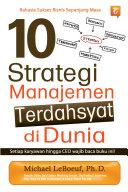
Blended
Using Disruptive Innovation to Improve Schools
"Blended is the practical field guide for implementing blended learning techniques in K-12 classrooms. A follow-up to the bestseller Disrupting Class by Clayton M. Christensen, Michael Horn, and Curtis Johnson, this hands-on guide expands upon the blended learning ideas presented in that book to provide practical implementation guidance for educators seeking to incorporate online learning with traditional classroom time. Readers will find a step-by-step framework upon which to build a more student-centered system, along with essential advice that provides the expertise necessary to build the next generation of K-12 learning environments. Leaders, teachers, and other stakeholders will gain valuable insight into the process of using online learning to the greatest benefit of students, while avoiding missteps and potential pitfalls."--Back cover.
- ISBN 13 : 111941329X
- ISBN 10 : 9781119413295
- Judul : Blended
- Sub Judul : Using Disruptive Innovation to Improve Schools
- Pengarang : Michael B. Horn, Heather Staker,
- Kategori : Education
- Penerbit : John Wiley & Sons
- Bahasa : un
- Tahun : 2017
- Halaman : 336
- Google Book : http://books.google.co.id/books?id=78BHDwAAQBAJ&dq=intitle:blended&hl=&source=gbs_api
-
Ketersediaan :
Navigate the transition to blended learning with this practical field guide Blended is the practical field guide for implementing blended learning techniques in K-12 classrooms.









